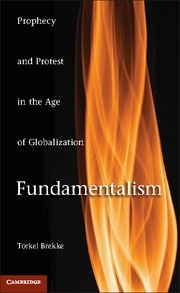Introduction
Published online by Cambridge University Press: 05 June 2012
Summary
“How did it feel to be named a cause of the invasion of Iraq?” I ask. The overweight mullah on the sofa looks at me. Then he breaks into laughter. His wife appears in the doorway with some tea and biscuits. She is just back from work. It is 2004, and this is my second interview with mullah Krekar. It takes place in the living room of his small apartment in Oslo, Norway. On the wall above the sofa is a picture of the Kaba in Mecca. On another wall is a bookshelf with books in Arabic. In the corner is a desk with a computer and a phone.
On February 5, 2003, U.S. secretary of state General Colin Powell presented the United Nations with data that would be the basis for the American justification of the war against Iraq. He said: “But what I want to bring to your attention today is the potentially much more sinister nexus between Iraq and the al Qaeda terrorist network, a nexus that combines classic terrorist organizations and modern methods of murder.” Powell described a situation where Ansar al-Islam, headed by mullah Krekar, was harboring al Qaeda fighters from Afghanistan and at the same time collaborating with Saddam Hussein. According to Powell, mullah Krekar’s group was the sinister nexus, the link between Saddam Hussein and international terrorism, which was a central argument for invading Iraq and making sure its potential weapons of mass destruction did not find their way to al Qaeda groups operating in Iraqi Kurdistan or other regions.
- Type
- Chapter
- Information
- FundamentalismProphecy and Protest in an Age of Globalization, pp. 1 - 14Publisher: Cambridge University PressPrint publication year: 2011



